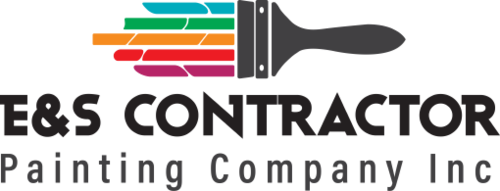BLOG POSTS
Managing National Commercial Painting Projects: A Guide

Sponsored by: E&S Contractor Painting Company
1. Define Project Scope and Objectives
Begin by clearly defining the scope and objectives of the painting project. Determine the number of locations to be painted, the desired timeline, budget constraints, and specific requirements for each site. Document these details in a project scope statement to serve as a reference throughout the project.
2. Site Assessment and Inventory
Conduct a thorough site assessment of each location to be painted. Create an inventory of the following:
Surface conditions and repairs needed
Types of paint and finishes required
Special considerations, such as environmental regulations or historical preservation requirements
Access and safety requirements
3. Budget Planning
Develop a comprehensive budget that includes all project-related costs, such as paint, labor, equipment rental, safety measures, and any additional services like scaffolding or power washing. Allocate budget resources for contingencies to account for unexpected expenses.
4. Select a Qualified Painting Contractor
Choose a reputable national painting contractor with experience in managing large-scale projects. Ensure they have the necessary licenses, insurance, and a track record of successful commercial painting projects. Request and evaluate bids from multiple contractors to make an informed decision.
5. Project Schedule and Timeline
Create a detailed project schedule that outlines the start and end dates for each location. Consider factors like weather conditions, site-specific challenges, and any required permits. A well-structured timeline ensures that the project stays on track and within budget.
6. Materials and Paint Selection
Select high-quality paints and materials suitable for commercial use and longevity. Consider factors like weather resistance, durability, and environmental impact when choosing paints. Ensure that the selected materials align with the project’s objectives and requirements.
7. Regulatory Compliance
Understand and comply with local, state, and federal regulations related to commercial painting, including environmental regulations, safety standards, and permits. Failure to comply can lead to costly delays and fines.
8. Safety Measures
Prioritize safety throughout the project. Implement safety measures, provide necessary training, and ensure that all contractors and workers adhere to safety protocols. Regular safety inspections and audits should be conducted.
9. Quality Control
Establish a robust quality control process to monitor the progress and quality of work at each location. Inspections and assessments should be conducted regularly to identify and address any issues promptly.
10. Communication and Reporting
Maintain open and transparent communication with all stakeholders, including contractors, site managers, and project teams. Regular progress reports should be provided to keep everyone informed about the project’s status.
11. Project Documentation
Keep thorough records of all project-related documents, including contracts, permits, change orders, invoices, and inspection reports. Proper documentation helps with accountability, dispute resolution, and future reference.
12. Post-Project Evaluation
After completing the project, conduct a post-project evaluation to assess the outcomes, identify lessons learned, and gather feedback from stakeholders. Use this information to improve future national commercial painting projects.
Conclusion
Managing national commercial painting projects requires meticulous planning, attention to detail, and effective communication. By following this comprehensive guide, you can ensure that your project is executed successfully, on time, and within budget. With the right strategies and a dedicated team, you can transform the appearance of multiple commercial locations and create a positive impression for customers and clients.
